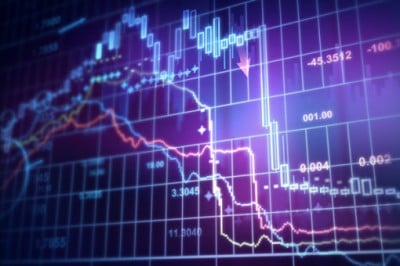Assets and Liabilities… And “Debt Saturation”

We live in a world where the difference between assets and liabilities has been blurred. In the old days, an asset was something you “owned” while a liability was something you “owed”. Over the years as everything became securitized, someone else’s liability is now routinely someone’s asset but ONLY thought of as an asset. It has always been this way but in the past what used to be seen as “someone’s liability” is now ONLY seen as “someone’s asset”.
In an article peened by Doug Short last week we can see how far this anomaly has gone
http://wolfstreet.com/2016/03/11/uncle-sams-largest-asset-student-loans-haunt-us-for-years/ .
Looking at the asset side of federal government “total financial assets” we can see how crazy this concept has become.
THE LARGEST financial asset held by the federal government is “student loans” making up 45% of the pie. I am sure you see the problem with this but I think it needs to be spelled out because it is the core of how far down the rabbit hole we have gone!
I would ask, how is this an asset? We are talking about a $1 trillion yoke around the necks of our youth. Can this generation pay it off? College kids are getting out of school (with or without a degree) and entering a labor market where jobs are simply not available. I would contend this student loan bubble is no “asset” at all, it is a liability to those who owe it and a liability to the government at the same time. It will be seen as a liability to the government when they are forced to “foreclose”. Written into law now is the fact that this debt cannot be discharged in bankruptcy. The only way this can be seen as an asset is the “control” it will afford over the future lives of an entire generation!
Stocks (equities) have always been seen as an asset. It turns out now however that the ONLY buyer of significance recently have been the corporations themselves
http://www.zerohedge.com/news/2016-03-14/bloomberg-stumbles-only-one-buyer-keeping-bull-market-alive .
Corporate America has gone on a borrowing binge, ruined their balance sheets (again) and used this debt to purchase their own shares. This has been the “support”. Once this process slows (or stops), will corporations be able to pay this debt back by selling their shares? We already know GAAP earnings per share are shrinking even with less float outstanding combined with bloated balance sheets, will these truly be seen an asset in a bear market?
Real estate is another area seen as a traditional asset. The fact that real estate is taxed each year may end up changing this view. Many older people who bought their homes 25 years ago or more are seeing the taxes (and annual repairs) absolutely dwarf what they originally had to pay for their property. “Expenses” to the point they may not even be able to afford a home that is “owned” free and clear of all debt!
The classic asset is “money in the bank”. Here we have a twofold problem. First, legally your “deposit” is no longer a deposit, it is a “loan”. With the new bail in legislation, when you “put” money in the bank you immediately become a “creditor” of the bank. The bank is not “holding” your money for your benefit, you are in fact lending money to the bank and become an unsecured lender …at the VERY BOTTOM of the totem pole. In fact, the derivatives owned/owed by your bank has leaped to the very top of the creditor list and will be paid first when the banks fail.
The second problem is the most significant and probably least seen of all, “what” is it exactly your bank “owes you”? They owe you a currency whether it be dollars, euros, yen, francs or pounds. And what are these exactly? …The liabilities of another country or another people. For simplicity let’s just look at dollars. What exactly is “a dollar” (federal reserve note). The simple answer is “not what it used to be”. A dollar today cannot actually be defined and I challenge anyone to answer with other than what the Constitutional definition is. The only way to bring dollars into existence is via “debt”, someone must “borrow” in order to create new dollars. It doesn’t matter whether it is you, me, a corporation or the U.S. Treasury, new dollars cannot be created unless someone “borrows” them into existence.
All currencies today are thus, they are ALL liabilities of the issuer yet considered an asset by the holder. In other words, the “wealth” of anyone holding a currency depends on the “performance” of the borrower (the issuing sovereign). The problem is obvious, there are virtually NO ASSETS today where an investor/saver can place their capital that is not someone else’s liability … except physical gold or silver (or other unencumbered God created asset such as diamonds).
This problematic situation to this point has yet to be understood because the credit Ponzi scheme has continued to work and has veiled the reality. Globally and systemically the world has arrived at “debt saturation” which obviously spells the limit to the Ponzi scheme. Debt growth cannot continue and thus can no longer feed the Ponzi scheme. In other words, we are facing a credit contraction where the world will be shown their assets in reality were nothing more than someone else’s failed and devalued liabilities.
It is this very simple core reason that gold (and silver) which are no one else’s liability will be seen for what they truly are. Real money, the ultimate in real assets and no one else’s liability! There is a very big difference between an asset and a liability, the world is about to be “schooled” on this fact!


